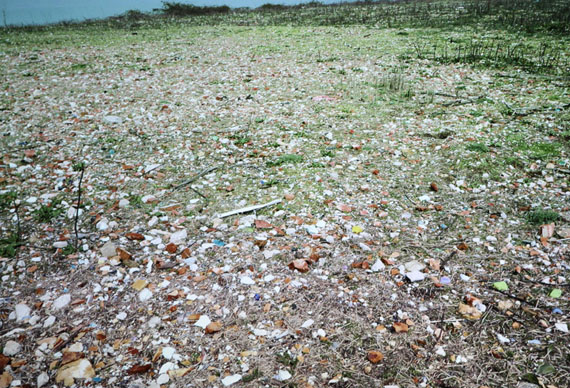
video stii
image © designboom
© lara almarcegui
Lara Almarcegui »
spanish pavilion at the 2013 venice art biennale
Exhibition: 1 Jun – 24 Nov 2013
Wed 29 May
Lara Almarcegui to represent Spain at the 55th Venice Biennale
Installation and Video
Octavio Zaya was appointed curator of the Spanish Pavilion by the Spanish Agency for International Development and Cooperation (AECID) in October 2012. He has selected the artist Lara Almarcegui to represent Spain at the “55. Esposizione Internazionale d’Arte.”
Itziar Taboada, Director of Cultural and Scientific Relations at the AECID, convened an Advisory Committee for Contemporary Art last June with the objective of selecting the curator for the Spanish Pavilion at the Venice Biennale. The committee, whose members were José Guirao (Director of Casa Encendida, Madrid), Teresa Velázquez (Head of Exhibitions of Museum Reina Sofia, MNCARS, Madrid), Estrella de Diego (Professor of Contemporary Art, Universidad Complutense, Madrid), and Alberto Ruiz de Samaniego (Curator of the Spanish Pavilion at the Venice Biennale 2007), recommended the selection of Octavio Zaya for the curatorship of the Spanish Pavilion.
Throughout the month of July 2012, Zaya concentrated his attention around the work of Lara Almarcegui, whom he has chosen to develop the project that will represent Spain at the Venice Biennale, one of the most prestigious events in the international arts calendar, which will be celebrating its 55th edition from the 1st of June to the 24th of November, 2013.
According to the Spanish curator, “Almarcegui has been working at the boundary between urban regeneration and decay, and devising exhibition projects that render visible what escapes our attention and even our awareness. Since the mid-1990s, she has been researching and studying the transitional spaces where the urban and the natural orders meet: the processes of urban planning and transformation of the peripheral wastelands of the cities brought on by economic, social, or political interests and changes. At the same time, she has been analysing urban and architectural landmarks and features that we hardly notice or upon which we rarely, if ever, focus our consideration. Operating as an archeologist of the present conducting field research, Almarcegui documents her investigations by way of guides, maps, and brochures, in an effort to concentrate on marginal elements or areas within the complexity of our urban reality, revealing the connections that inform us about the relationship between our past and our future. Likewise, in deconstructing buildings and other landmarks and constructions, Almarcegui unravels our understanding of inhabiting, by showing the inarticulate, bare materials of which the buildings are made, or uncovering the products of recycling that they use and that they themselves, in turn, end up becoming, to get us closer to the inherently entropic nature of civilization. Ultimately, these works connect the outdoors with the indoors, and the inside with its awareness of itself, in a dialectical process of knowledge.”�